The 8 Best Golf Courses in Palm Springs
Palm Springs is synonymous with golf. Nearly every major street in the region leads to fairways lined with palm trees and mountain views. But there’s more beneath the surface than scorecards and scenic backdrops. Some Coachella Valley public golf courses cater to casual weekend golfers, while others punish even the most seasoned players.
If you’re looking for which Palm Springs courses to know about before you plan your next golf trip (and why) keep reading. Below are eight golf courses that consistently pop up on the radar of serious golfers in the Palm Springs area. Each delivers something unique.
1. Escena Golf Club
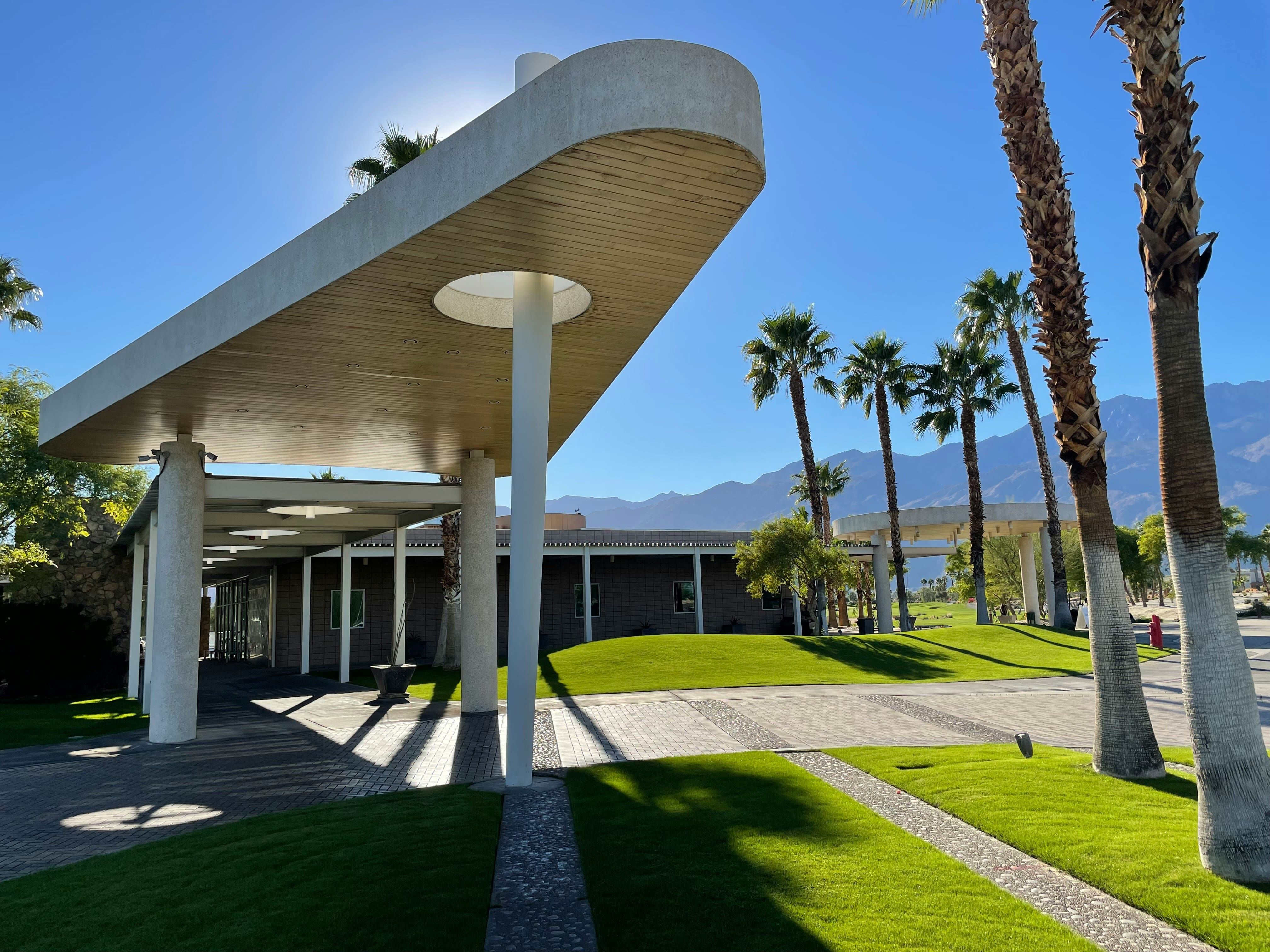
Escena may be young compared to some of the desert’s older clubs, but it packs a punch. Its streamlined course offers a blend of resort accessibility and championship shot-making potential. Fairways are wide on the front nine, lulling you into a sense of comfort, but the back nine tightens significantly. This shift forces strategic decision-making on every approach shot.
The bunkering is modern: deep and strategically placed, so they’re not just aesthetic flourishes. While many desert courses lean on punishing rough or water hazards, Escena emphasizes angled fairways to keep you on your toes. The greens here can run faster in peak season than you might guess, largely because the course uses an advanced irrigation system that helps maintain firmness. Escena also offers a strong pace of play; marshals are known to enforce time guidelines. The location, right off Gene Autry Trail, is convenient for anyone staying in central Palm Springs—no long drives or obscure entry points.
Escena Golf Club Facts
- Length: 7,173 yards
- Par: 72
- Architect: Jack Nicklaus Design Team (managed updates; original design credited to the Escena development group)
- Founded: 2007
- Location: 1100 Clubhouse View, Palm Springs, CA 92262
2. Indian Canyons Golf Resort
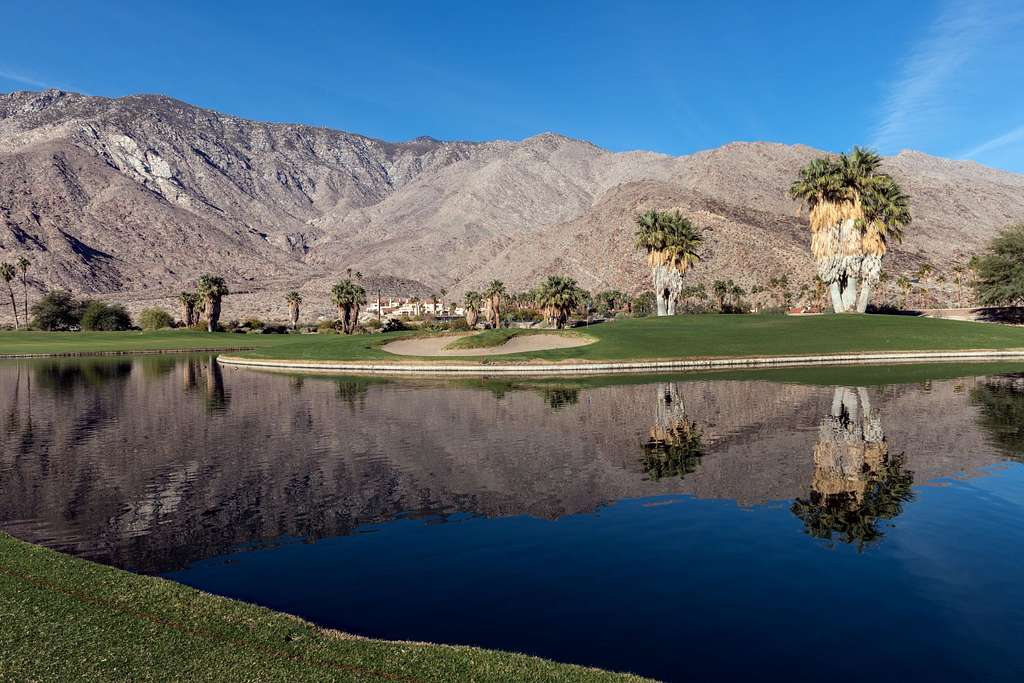
Indian Canyons splits into two distinct courses: the North Course and the South Course. If you’re purely after a challenge, the South Course—renowned for its picturesque scenery—is the one most golfers talk about. The course sits on land owned by the Agua Caliente tribe, and there’s a conscious effort to keep the grounds tied to local history. The terrain is relatively flat, but strong winds rolling off the mountains can add significant challenge, especially in the late afternoon.
Rather than relying on forced carries over desert scrub, Indian Canyons uses well-placed water hazards, especially around the 9th and 18th holes, to demand precision. Fairways can be forgiving, but approach shots punish mistakes. Mid-century modern fans will appreciate the clubhouse—an architectural time capsule that often gets overshadowed by newer clubs.
Indian Canyons Golf Resort Facts
- Length: 6,582 yards (South Course)
- Par: 72
- Architect: Casey O’Callaghan redesign (original layout by Bob Hope & Harold Heers)
- Founded: Early 1960s; major updates in 2004
- Location: 1097 Murray Canyon Dr, Palm Springs, CA 92264
3. Tahquitz Creek Golf Resort

Tahquitz Creek offers two courses: the Resort Course and the Legend Course. The Legend Course traces its roots back to the 1950s, making it one of the older layouts in Palm Springs. It’s old-school, with narrow fairways that force you to shape shots, especially on the back nine. The Resort Course, added in the 1990s, is more modern—wider fairways, large greens, and plenty of bunkers. Value-seekers appreciate Tahquitz Creek for cost-effective tee times that still deliver solid playing conditions.
The Legend Course is lined with mature trees—unusual for desert golf—while the Resort Course features more native desert scape and water. If you’re short on time, the Legend Course generally plays quicker. Both courses share a spacious, well-maintained practice area, making it a great spot to dial in your swing before teeing off.
Tahquitz Creek Golf Resort Facts
- Length: 6,705 yd (Resort) / 6,600 yd (Legend)
- Par: 72 (Both)
- Architect: Ted Robinson (Resort); William F. Bell (Legend)
- Founded: 1957 (Legend), 1995 (Resort)
- Location: 1885 E. Murray Dr, Palm Springs, CA 92264
4. PGA West TPC Stadium Course
.png?updatedAt=1748354495565)
PGA West in nearby La Quinta is a household name for golf fans, and its TPC Stadium Course is iconic for its punishing Pete Dye layout. Expect large waste bunkers, deep pot bunkers, and elevated greens at nearly every turn. Many consider it one of the toughest tracks in the desert—so tough that some tour pros complained after it opened.
This is target golf at its finest: precision over power. The closing holes are nerve-wracking, with water guarding greens that punish even slight mis-hits. Course conditions are pristine in peak season, but high demand and difficulty can slow pace of play. For golfers craving a serious test, the TPC Stadium Course is essential.
PGA West TPC Stadium Course Facts
- Length: 7,113 yards
- Par: 72
- Architect: Pete Dye
- Founded: 1986
- Location: 56150 PGA Blvd, La Quinta, CA 92253
5. Desert Willow Golf Resort
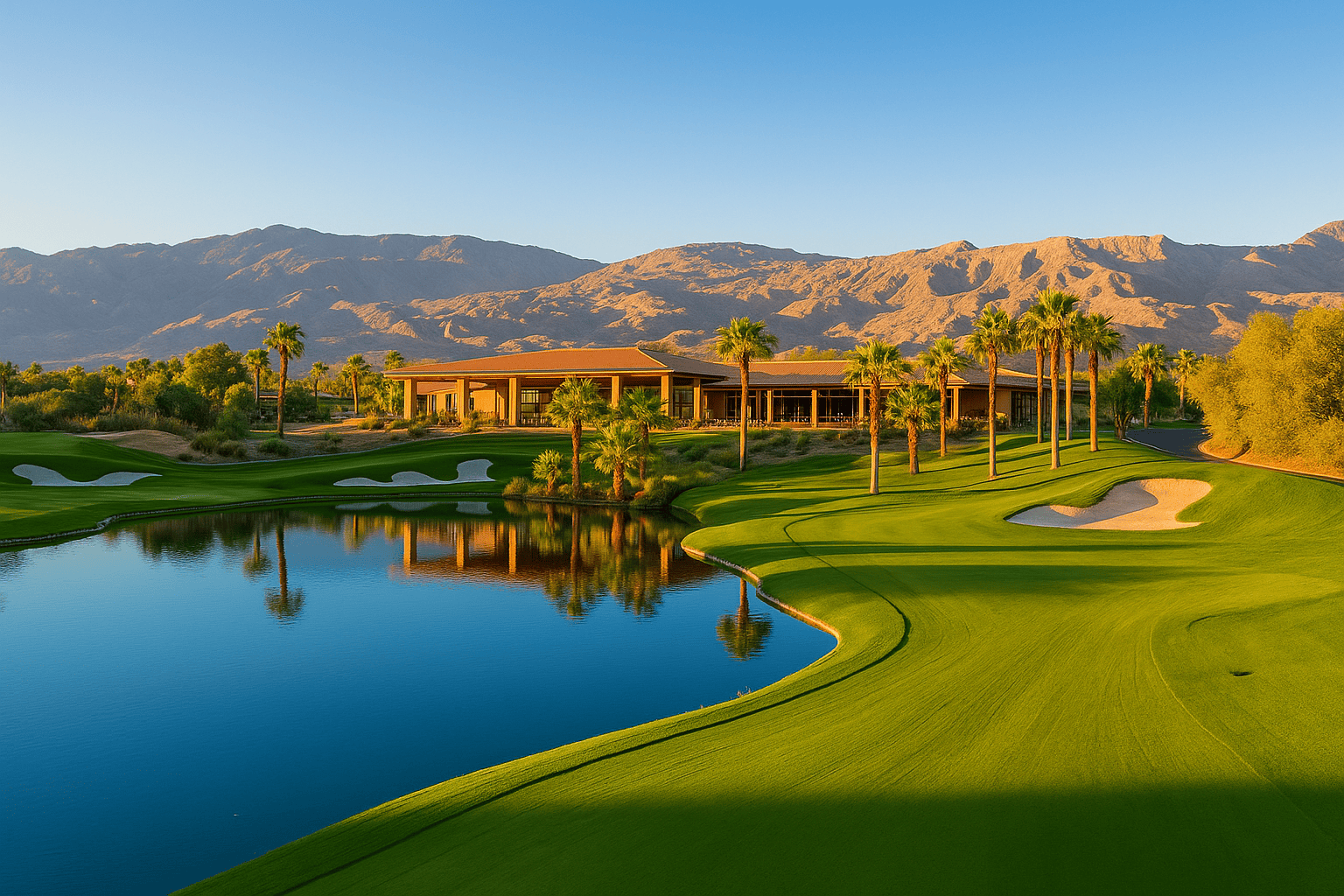
Desert Willow in Palm Desert features two courses: Firecliff and Mountain View. Firecliff, the primary draw, emphasizes precise approach shots over raw distance. Architect Michael Hurdzan wove native desert landscaping into the design—miss the fairway and you’ll find rocky outcroppings instead of typical rough.
Mountain View is slightly more forgiving. Both courses benefit from excellent practice facilities: an expansive range, well-kept chipping areas, and ample putting green space. Because Desert Willow is city-owned, green fees can be more affordable, especially for residents.
Desert Willow Golf Resort Facts
- Length: 7,056 yd (Firecliff) / 6,913 yd (Mountain View)
- Par: 72 (Both)
- Architect: Michael Hurdzan, Dana Fry, & John Cook
- Founded: 1997 (Firecliff), 1998 (Mountain View)
- Location: 38995 Desert Willow Dr, Palm Desert, CA 92260
6. Marriott’s Shadow Ridge Golf Club

Often the first desert course many travelers play, Marriott’s Shadow Ridge was designed by Nick Faldo with an emphasis on bunkering. The greens have subtle breaks that challenge all skill levels. Because it’s part of a resort, course conditions are consistently excellent.
Pace of play varies—tourists and novices often fill weekend tee sheets—but the club hosts junior clinics and charity events, adding community value. If you want a family-friendly venue or a course connected to high-quality lodging, Shadow Ridge delivers.
Marriott’s Shadow Ridge Golf Club Facts
- Length: 7,006 yards
- Par: 71
- Architect: Nick Faldo
- Founded: 2001
- Location: 9002 Shadow Ridge Rd, Palm Desert, CA 92211
7. Cimarron Golf Resort
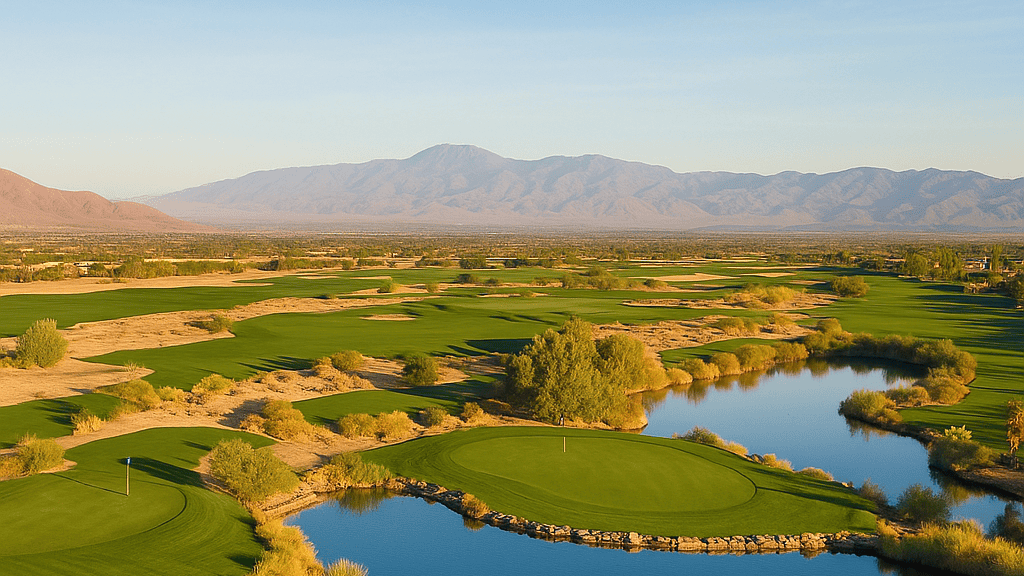
Cimarron Golf Resort in Cathedral City offers two tracks: Boulder (championship) and Pebble (executive). Boulder’s wider fairways invite you to unleash the driver, while Pebble provides a shorter, quicker round. Wind can be a bigger factor here than at neighboring courses, testing your shot-shaping skills.
Its location in a river wash means fast-draining soil—after rare desert rains, Cimarron reopens sooner than many competitors. Flexible tee-time hunters often find value here, along with uninterrupted views of the San Jacinto Mountains.
Cimarron Golf Resort Facts
- Length: 6,858 yards (Boulder)
- Par: 73 (Boulder)
- Architect: John Fought
- Founded: 2000
- Location: 67603 30th Ave, Cathedral City, CA 92234
8. Indian Wells Golf Resort
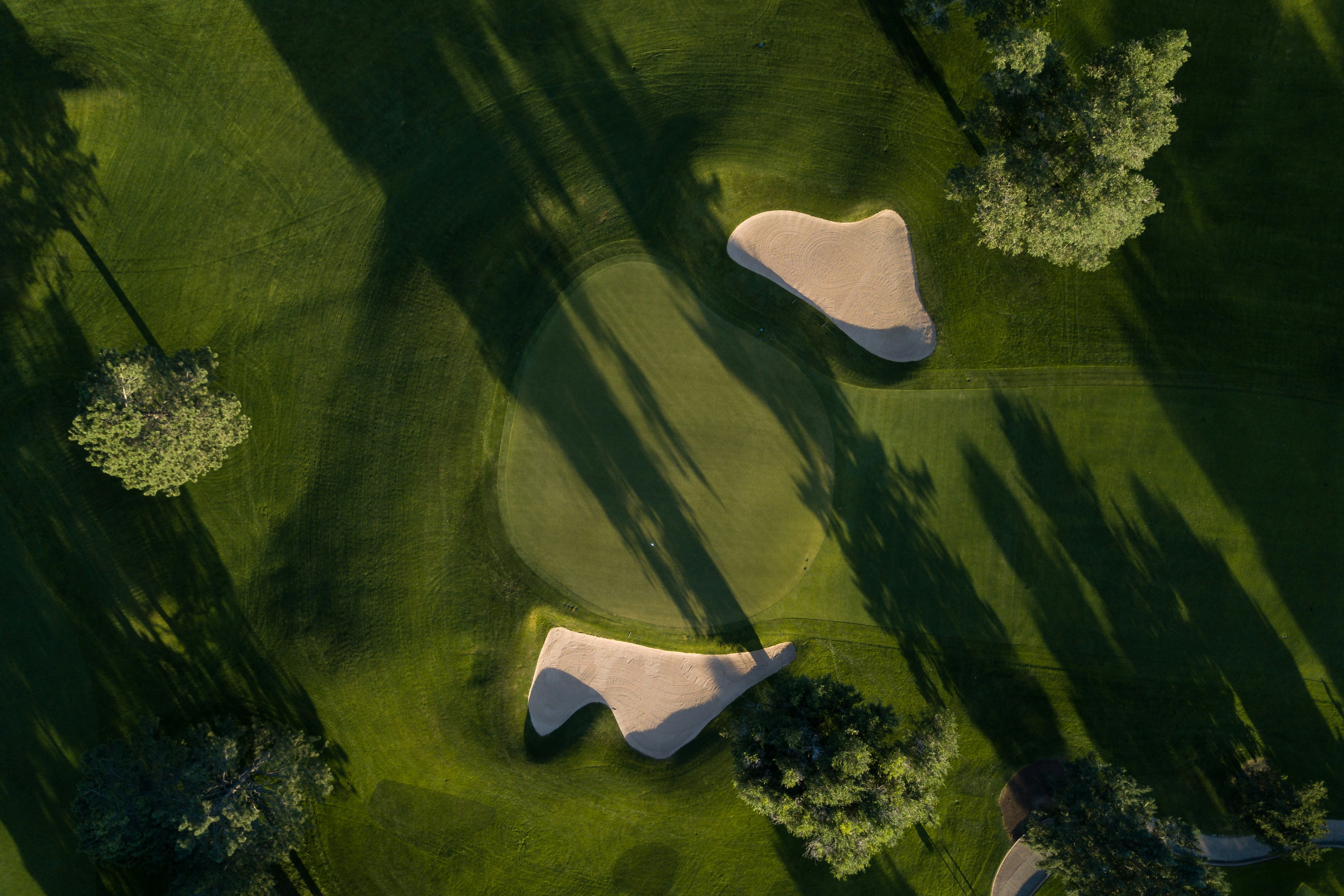
Indian Wells Golf Resort features two acclaimed courses: the Celebrity Course and the Players Course. Celebrity has manicured landscaping that feels like a private club, while Players stretches longer with elevated greens and added difficulty. Tournament-level maintenance is the norm here.
Located about 30 minutes southeast of downtown Palm Springs, Indian Wells escapes some tourist congestion. Expect premium service—from cart attendants to digital yardage systems—and premium rates in peak season. But for many golfers, the immaculate conditions justify the price.
Indian Wells Golf Resort Facts
- Length: 7,050 yd (Players) / 6,675 yd (Celebrity)
- Par: 72 (Players) / 72 (Celebrity)
- Architect: John Fought (Players), Clive Clark (Celebrity)
- Founded: 1986 (Players; later redesigned), 2006 (Celebrity)
- Location: 44500 Indian Wells Ln, Indian Wells, CA 92210
Ready to Book a Golf Vacation?
There you have it: eight prime Palm Springs golf courses that aren’t carbon copies of one another. Each brings its own flavor—historical roots, desert-style hazards, or modern resort perks. Expect pristine fairways and postcard scenery, but be ready for surprises: shifting winds, lightning-fast greens, and quirky layouts that force you to think differently. That’s the real Palm Springs golf scene—varied, demanding, and always memorable. Tee it up and enjoy.
FAQs
Which golf course in Palm Springs is the toughest?
Many locals and visiting pros point to the PGA West TPC Stadium Course as the toughest. Pete Dye’s design incorporates deep bunkers, water hazards near greens, and narrow landing areas—perfect for golfers seeking a serious test.
How do green fees vary across these courses?
Peak season (roughly November – April) brings higher rates, often $100–$200+ for prime tee times at courses such as Indian Wells, Desert Willow, or PGA West. Off-season deals—especially twilight rounds—can dip below $50.
Are there any walkable courses in Palm Springs?
Tahquitz Creek’s Legend Course is relatively flat and walkable, though distances between some greens and tees are long. Most desert courses recommend carts due to heat and terrain.
Can you find last-minute tee times at these popular courses?
During the hot summer off-season, yes—courses often have same-day slots. In peak season, tee sheets fill quickly, so it’s best to book well ahead. Some clubs post last-minute specials online, but you’ll need to act fast.


